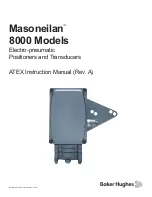
Using Automatic Link Establishment (ALE)
35
Identification of a sounding signal sent from a station indicates a high probability of bidirectional
communication.
The length of the sounding cycles can be set to short or long cycles, depending on propagation
conditions. When propagation changes are slow, long intervals of about 1 or 2 hours may be
sufficient. If, however, the propagation changes are erratic and rapidly changing, or if it is critical to
have updated connectivity information, then shorter intervals are recommended. Each station can
also measure BER and S/N, and update the LQA table accordingly.
The maximum score for receiving an optimum sounding is 70%; the minimum score is 30%. The
score given to a station that did not send any sounding or a station whose sounding has not been
received is also 30%.
Sounding Cycle Time
The sounding signal is repeated at regular intervals on all the channels in the network. A complete
round of sounding messages, or
sounding cycle,
can be programmed to 30, 60, 90, or 120 minutes
when the automatic sounding is on. You can also manually initiate sounding when there is a specific
need for it, even if the system is set to operate in the automatic mode.
A short sounding cycle ensures a more updated LQA memory. However, frequent sounding increases
network occupancy, leaving less channel-free time for the users. Figure
4
illustrates network
occupancy in relation to sounding cycles of 30, 60, 90 and 120 minutes. (Note that both axes have
logarithmic scales.) The chart also shows 80% and 95% occupancy in a 120-minute sounding cycle at
a very rapid scanning rate (applicable only to multiple-channel networks).
80%
10
9
8
3
7
6
5
4
2
1
200
100
90
80
70
60
50
40
30
50
1
2
3
4
5 6 7 8 9 10
20
30
40 50 60 70 80 90
300
200
100
USERS
CHANNELS
53%
40%
80%
20%
27%
40%
80%
40%
20%
13%
10%
20%
10%
7%
5%
5%
10%
5%
60 min
cycle
30 min
cycle
90 min
cycle
120 min
cycle
Figure
4
. Network Occupancy
Use the chart to determine the best sounding cycle for your particular network, bearing in mind
network occupancy, propagation conditions and other considerations.
The following examples demonstrate how to read the chart.
















































